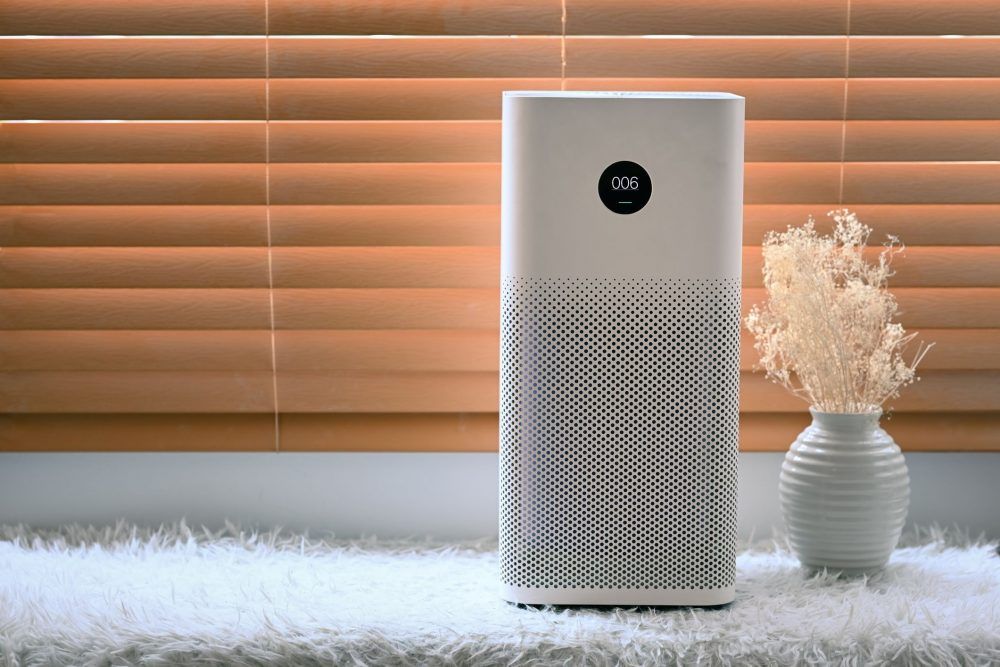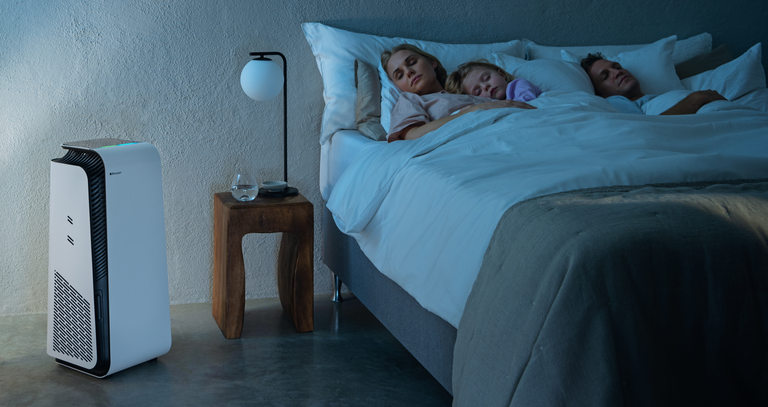Featured
Table of Contents
- – Comprehending Mold and Its Health Impacts
- – Can Air Purifiers Help Decrease Mold And Mildew?
- – The Scientific Research Behind Air Purifiers ...
- – Are Air Purifiers Right for You When Fighting...
- – A Multi-Pronged Technique to Conquering Mold ...
- – Living Mold-Free: Beyond Air Purifiers
- – When to Call the Experts
- – Conclusion: A Breath of Fresh Air and a Mold-...

Air cleansers are typically suggested as an option, encouraging cleaner air and decreased direct exposure to mold spores. Are air purifiers genuinely worth it in the battle against mold?
Comprehending Mold and Its Health Impacts
Before diving into air purifiers, let's clarify mold and mildew and its possible health threats:
- Mold And Mildew Fundamentals: Mold and mildew is a fungi that flourishes in wet settings. It recreates by releasing spores into the air, which can be inhaled and cause different illness.
- Health and wellness Problems: Exposure to mold spores can set off allergy signs and symptoms like sneezing, coughing, scratchy eyes, and a runny nose. In some instances, mold exposure can additionally result in respiratory system infections and get worse existing respiratory conditions like bronchial asthma.
- Mold Doesn't Discriminate: While some individuals are extra sensitive to mold and mildew than others, any person can experience wellness troubles from long term exposure.
Can Air Purifiers Help Decrease Mold And Mildew?
Air cleansers can play a role in handling mold, however it is essential to recognize their limitations:

- Capturing Spores: Air cleansers with HEPA filters can successfully capture mold and mildew spores circulating airborne. This can help in reducing exposure and possibly relieve allergic reaction symptoms.
- Minimal Influence On Resource: Air cleansers do not eliminate the source of the mold and mildew trouble. Mold and mildew removal is essential to address the origin and protect against further growth.
- Wetness Control is Trick: Mold and mildew prospers in moist atmospheres. Air cleansers do not deal with wetness concerns. Without dealing with the underlying dampness problem, mold and mildew will likely return.
The Scientific Research Behind Air Purifiers and Mold
While air cleansers can't eliminate mold and mildew itself, some study recommends they can be a helpful tool in handling mold and mildew exposure:
- A 2012 study released in the journal "Structure and Atmosphere" located that air cleansers with HEPA filters considerably reduced airborne mold and mildew spore concentrations in an examination atmosphere.
- A 2015 review published in the journal "Current Allergic reaction and Asthma Records" ended that air purifiers, alongside various other mold and mildew remediation methods, can be valuable in lowering mold-related signs and symptoms in sensitive individuals.
Nevertheless, it is very important to keep in mind some limitations:
- HEPA Filter Performance: HEPA filters are not 100% efficient at capturing all mold and mildew spores, especially very tiny ones.
- Filter Maintenance: Routinely changing HEPA filters according to the producer's guidelines is essential for preserving optimal efficiency. Clogged filters lose efficiency.
Are Air Purifiers Right for You When Fighting Mold? Factors to Consider
Here are some vital variables to take into consideration when making a decision if an air purifier deserves it for your mold and mildew situation:
- Severity of Mold And Mildew Development: For little mold and mildew spots, dealing with the wetness resource and removing the mold and mildew may be enough. Air purifiers might be much less essential. For considerable mold and mildew development, an air purifier can be a handy addition to your removal method.
- Health Issues: If you experience allergic reaction signs or respiratory system problems suspected to be mold-related, an air purifier can offer some alleviation and enhance indoor air high quality.
- Addressing the Resource: Keep in mind, air purifiers are not a replacement for correct mold and mildew remediation. Recognizing and attending to the source of moisture that's creating the mold growth is crucial for a long-term solution.
A Multi-Pronged Technique to Conquering Mold And Mildew
While air cleansers can be a handy device, a thorough approach is crucial to winning the fight versus mold and mildew:
- Moisture Control: One of the most essential step is to identify and resolve the resource of moisture that's enabling mold to expand. This could include dealing with leaky pipes, enhancing air flow in shower rooms and kitchen areas, or dealing with condensation concerns.
- Mold Removal: Professionals advise professional mold removal for extensive mold and mildew growth. They have the knowledge and devices to safely get rid of mold and mildew and stop more spread. For little mold and mildew spots, you may be able to manage elimination yourself, complying with safety standards.
- HEPA-Filtered Vacuuming: After mold remediation, HEPA-filtered vacuuming can help remove staying mold spores from surfaces.
- Air Purifier Integration: Once the source of the mold is addressed and the mold itself is gotten rid of, an air purifier can be an important tool to capture continuing to be airborne spores and improve interior air high quality.
Living Mold-Free: Beyond Air Purifiers
Below are some added pointers to advertise a mold-free environment:
- Maintain Low Indoor Humidity: Goal for a moisture degree between 30% and 50% utilizing a dehumidifier in wet environments. This aids protect against mold development.
- Rise Air Flow: Enhance air circulation in your home by opening up windows frequently and using exhaust fans in bathrooms and cooking areas.
- Clean and Dry Damp Surfaces: Promptly tidy and completely dry any type of wet surfaces, such as spills or condensation, to stop mold and mildew from taking root.
- On A Regular Basis Evaluate Prone Areas: Focus on areas vulnerable to mold and mildew development, like shower rooms, basements, and attic rooms. Routinely check for signs of mold and mildew and address dampness problems promptly.
- Consider Mold-Resistant Materials: When restoring or changing building materials, take into consideration making use of mold-resistant options, especially in moisture-prone locations.
When to Call the Experts
While some mold and mildew remediation jobs can be dealt with on your very own for tiny mold patches, there are circumstances where specialist aid is vital:
- Considerable Mold Development: If you discover a big area of mold development, particularly if it covers even more than 10 square feet, it's ideal to hire a specialist mold and mildew remediation company. They have the know-how and devices to securely eliminate the mold and stop additional spread.
- Wellness Issues: If you or your household participants experience persistent respiratory system problems or allergy signs presumed to be mold-related, seeking advice from a healthcare specialist and a mold remediation specialist is recommended.
- Concealed Mold: If you presume mold growth behind walls or in crawlspaces, expert assistance is required to locate and eliminate the mold and mildew securely and efficiently.
Conclusion: A Breath of Fresh Air and a Mold-Free Home
Mold and mildew development in your house can be a worrying issue, yet with the right approach, you can win the fight and produce a healthier living environment. While air purifiers can be a useful device in handling mold and mildew exposure, remember they are not a standalone remedy. By addressing the source of dampness, carrying out proper mold and mildew removal methods, and incorporating preventative procedures, you can breathe less complicated in a mold-free home.
Extra Factors To Consider:
- Air High Quality Screening: For extreme mold issues or if you have health and wellness worries, think about expert air high quality testing to evaluate mold spore degrees and assist your remediation initiatives.
- Long-Term Monitoring: After successful mold removal, it's a good idea to check your home for indications of reappearance, specifically in locations formerly vulnerable to mold and mildew development.
By taking an aggressive method and incorporating these approaches, you can develop a healthy and balanced and mold-free environment on your own and your family members.
Table of Contents
- – Comprehending Mold and Its Health Impacts
- – Can Air Purifiers Help Decrease Mold And Mildew?
- – The Scientific Research Behind Air Purifiers ...
- – Are Air Purifiers Right for You When Fighting...
- – A Multi-Pronged Technique to Conquering Mold ...
- – Living Mold-Free: Beyond Air Purifiers
- – When to Call the Experts
- – Conclusion: A Breath of Fresh Air and a Mold-...
Latest Posts
Comprehending the Shift: Why Cammeray is Phasing Out Gas
All about Can Your Yeti Rambler Survive A Trip Through The Dishwasher?
Battling the Mold Threat: Are Air Purifiers Well Worth It?
More
Latest Posts
Comprehending the Shift: Why Cammeray is Phasing Out Gas
All about Can Your Yeti Rambler Survive A Trip Through The Dishwasher?
Battling the Mold Threat: Are Air Purifiers Well Worth It?